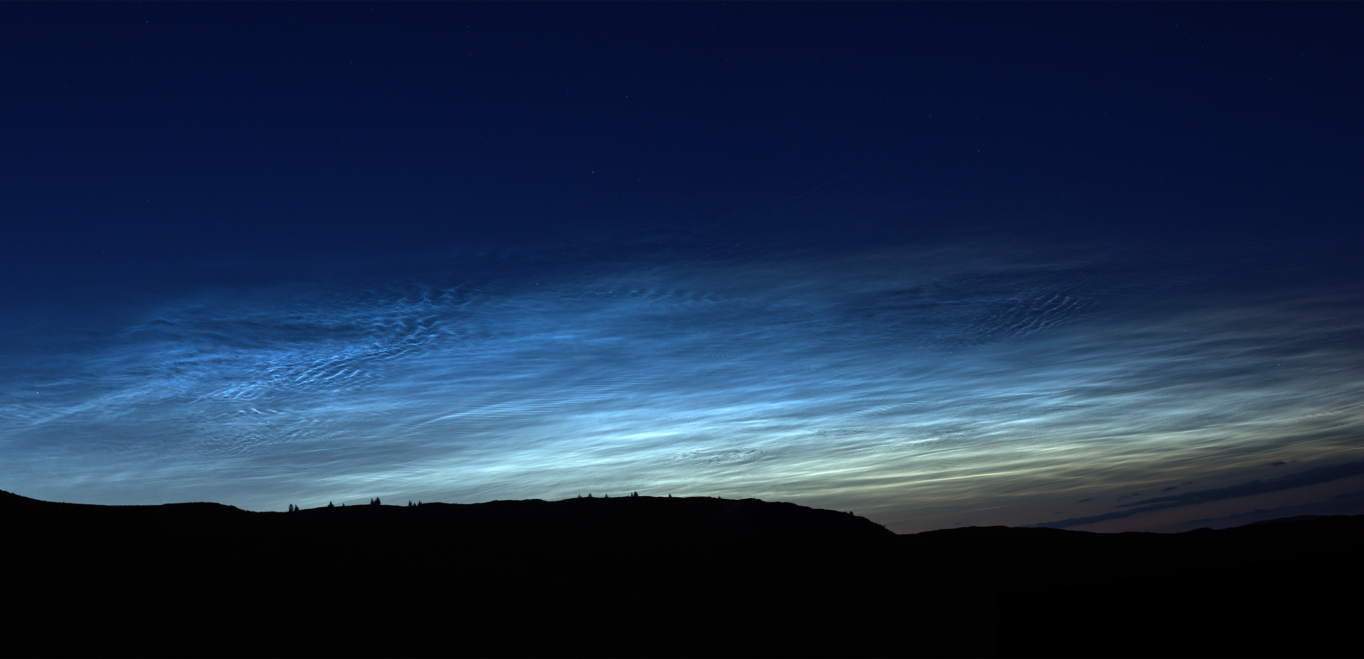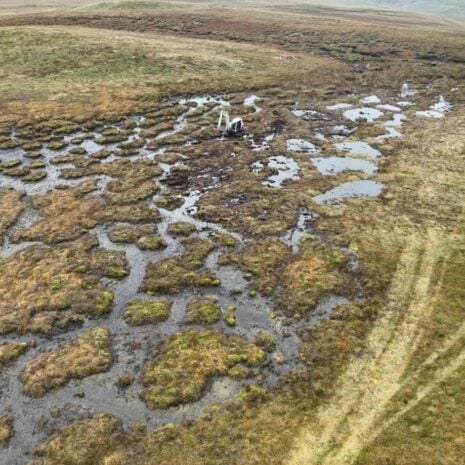Welcome to this month’s edition of Eyes on the Night Sky, where we will reveal the best objects to view in the night sky over June.
There is less time for proper stargazing this month but it is still possible to enjoy the deep twilight skies.
The Summer Solstice falls on 21st June this year, where the North Pole is at its maximum tilt towards the Sun. In the northern hemisphere, the sun will rise at 4:44am and set at 9:20pm, providing a grand total of 16 hours and 38 minutes of daytime.
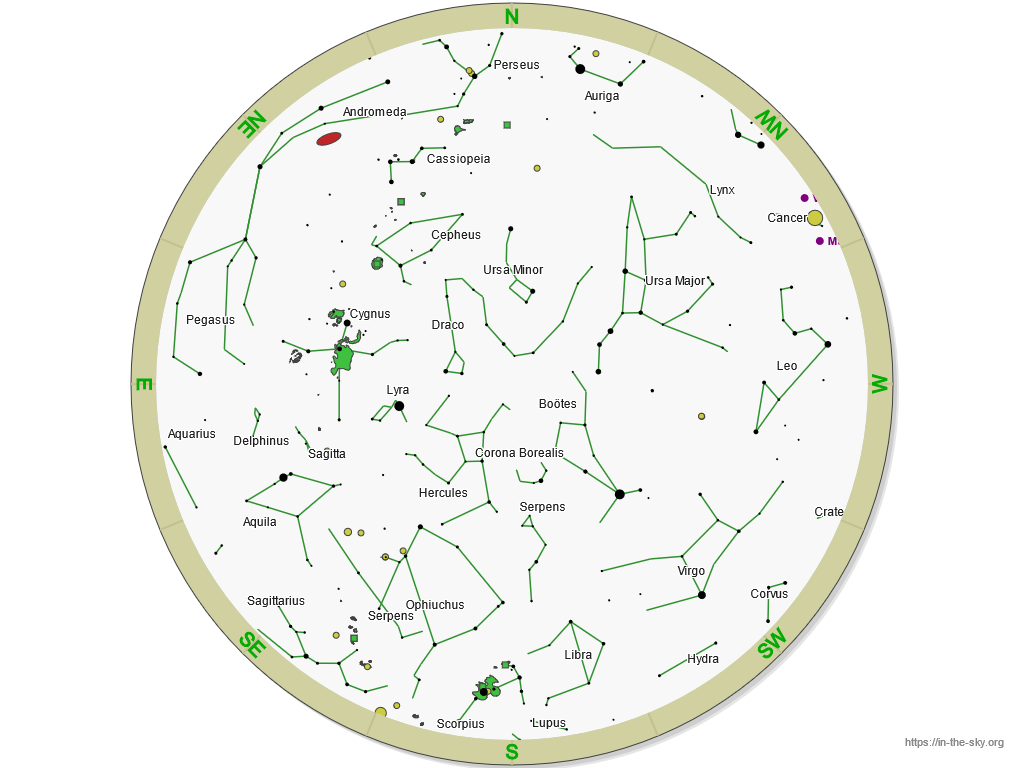
June Constellations
The spring constellations of Leo and Virgo sets in the west and the Summer constellations grace the night sky. The constellations of Cygnus, Hercules, Lyra and Ophiuchus dominate with some wonderful deep sky treasures that may be see with a large telescope (for example, the Great Globular Cluster in Hercules, the Ring Nebula and the Veil Nebula) but it is better to wait for darker skies to return before studying them.
You can download the printable constellation map from here (credit: Dominic Ford, author in-the-sky.org)
The Full Moon occurs on 4 June and the New Moon on 18 June.

Venus and Moon Conjunction
On 21 June, take a look at a lovely conjunction of Venus and the crescent Moon, positioned low in the evening sky. After sunset, watch them emerge as the sky grows dark. You might be able to see Mars in the western sky. If you have a telescope, take a look at Venus – you will see the planet in crescent phase.
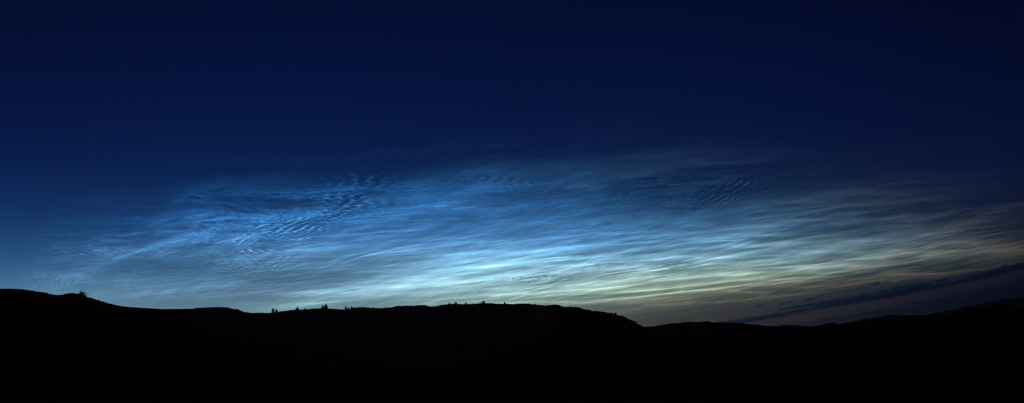
Noctilucent Clouds
Noctilucent cloud season is in full swing this month so make sure you get the opportunity to see these ‘night shining clouds’ which emerge a couple of hours after sunset and before sunrise. Forecasting them isn’t easy and it can be frustrating to stay up late only to see nothing but Netweather.tv provides some excellent advice to study available data to increase your chances of seeing them when they occur. These wonderful clouds, situated 200,000 feet above us, slowly change and alter structure over time, retreat and expand right before your eyes.
Noctilucent clouds can also look wonderful through binoculars – if you have them to hand, take a look at the fine structure.
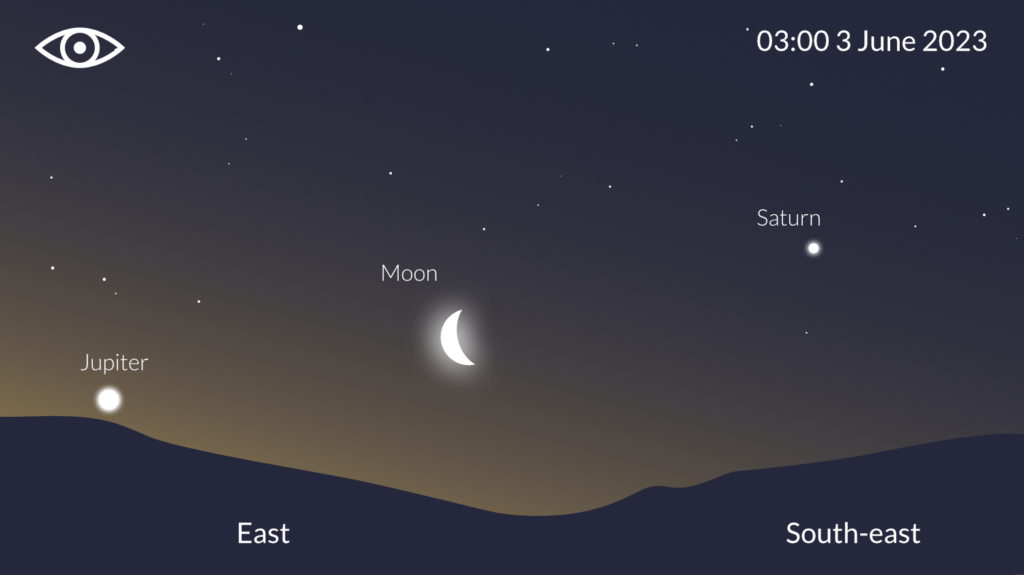
Saturn and Jupiter
For the early risers, Saturn and Jupiter will grace the predawn sky. Saturn rises at around 2am at the beginning of the month, followed by Jupiter at 3.20am. By the end of the month, the two planets will be relatively well-placed to study with telescopes. Use your binoculars to see if you can spot Jupiter’s moons.
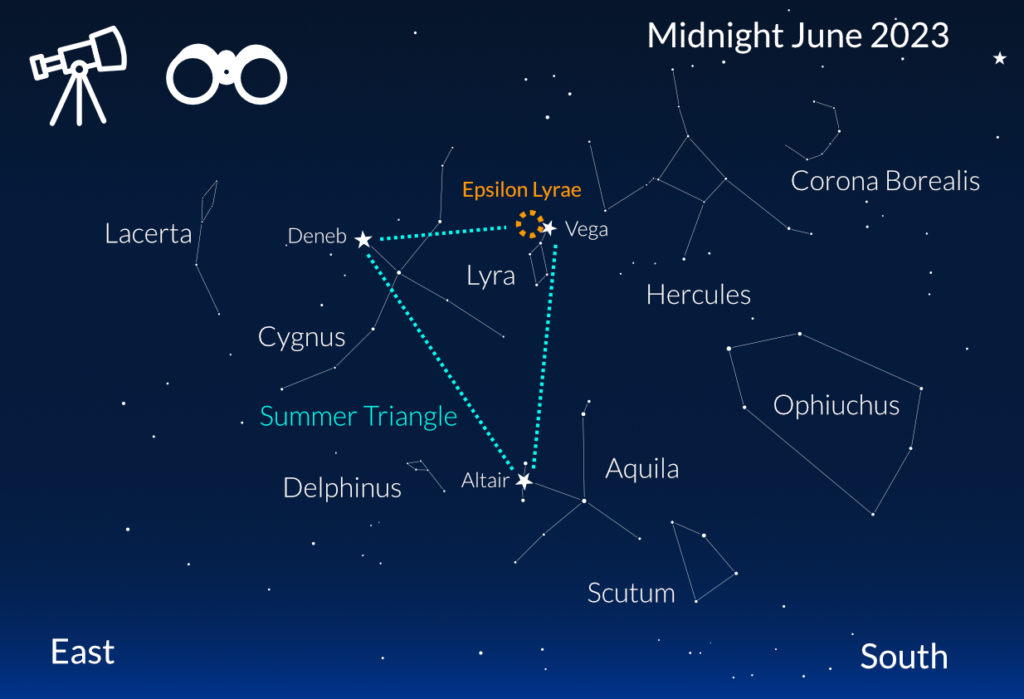
The Double-Double
For deep-sky objects, try finding the ‘Double Double’ in the constellation of Lyra. Officially known as Epsilon Lyrae (ε Lyrae), it can be easily spotted by using the bright star Vega, which forms part of a bright trio of stars called the Summer Triangle: Deneb in the constellation of Cygnus, Vega in the constellation of Lyra and Altair in the constellation of Aquila.
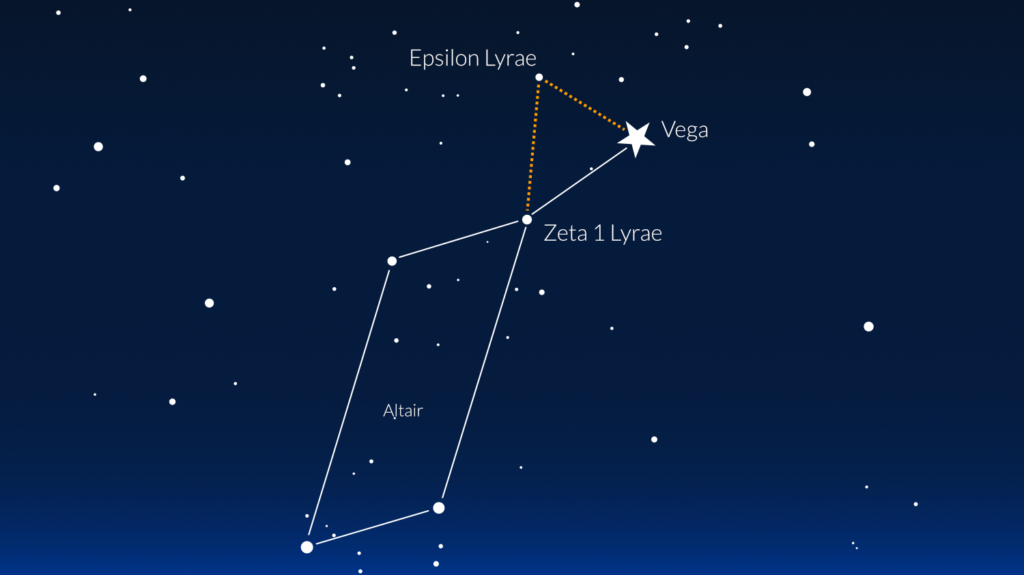
After locating Vega use the star directly below called Zeta 1 Lyrae and then locate the third star Epsilon Lyrae, forming a little triangle.
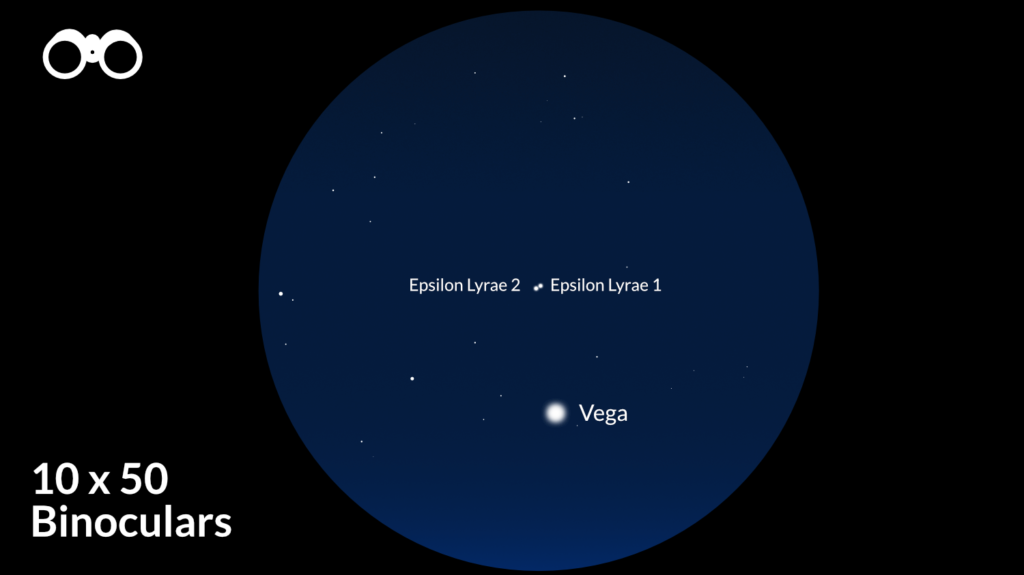
After locating Vega use the star directly below called Zeta 1 Lyrae and then locate the third star Epsilon Lyrae, forming a little triangle. When you have spotted Epsilon Lyrae, look at it with binoculars you will be able to split the stars into two: Epsilon Lyrae 1 and Epsilon Lyrae 2.
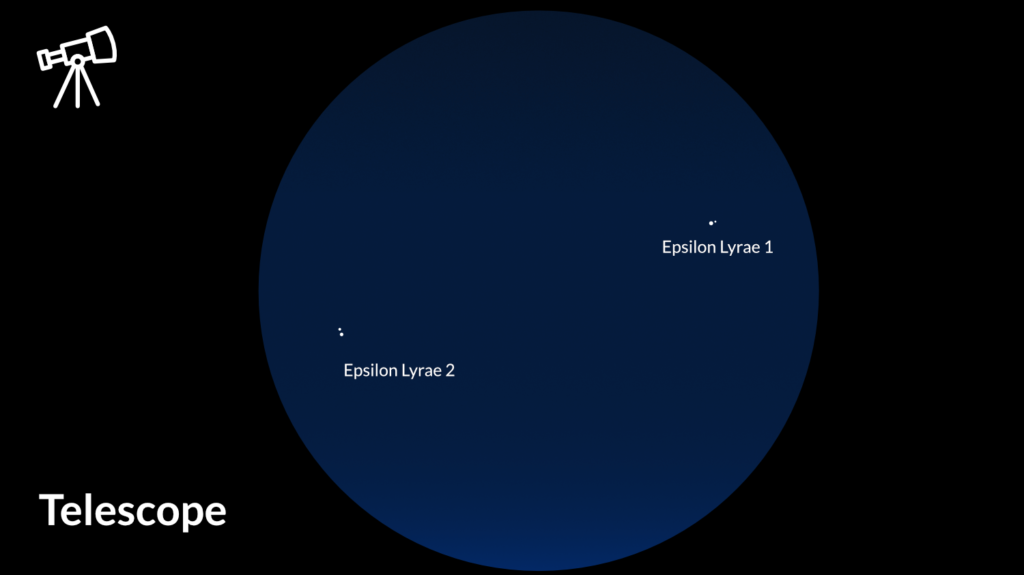
With telescopes of six inches of aperture and above, you will see that Epsilon Lyrae 1 and Epsilon Lyrae 2 have a second star each, making them two binary star systems. Views through your telescope may differ but it is possible to split these two stars into four. This double-double star system actually has a fifth star, which is only detectable using specialised equipment.

